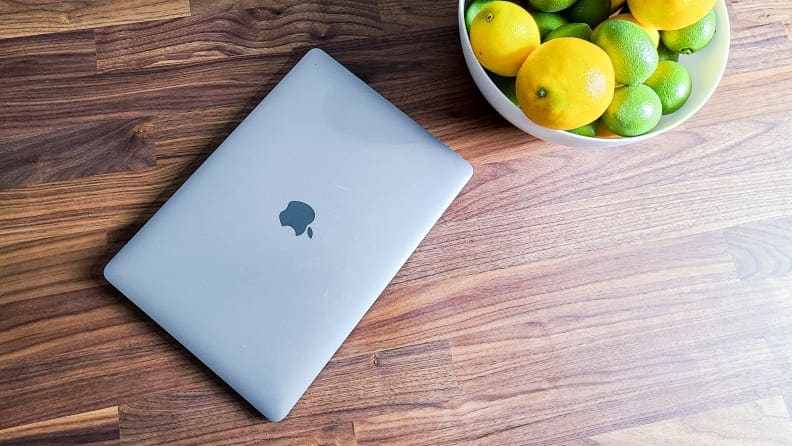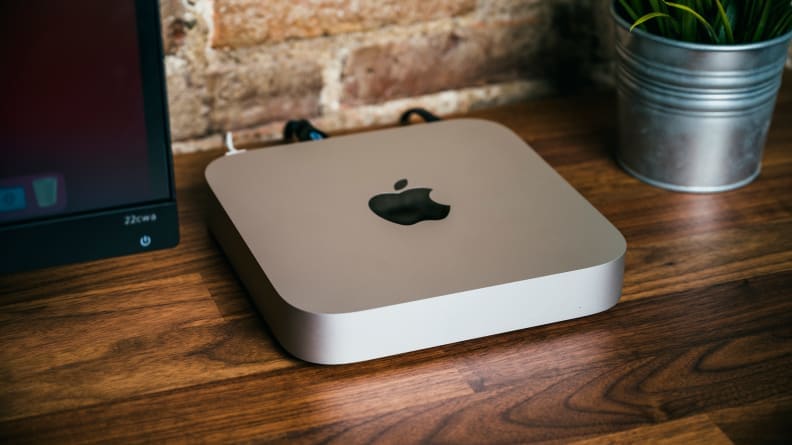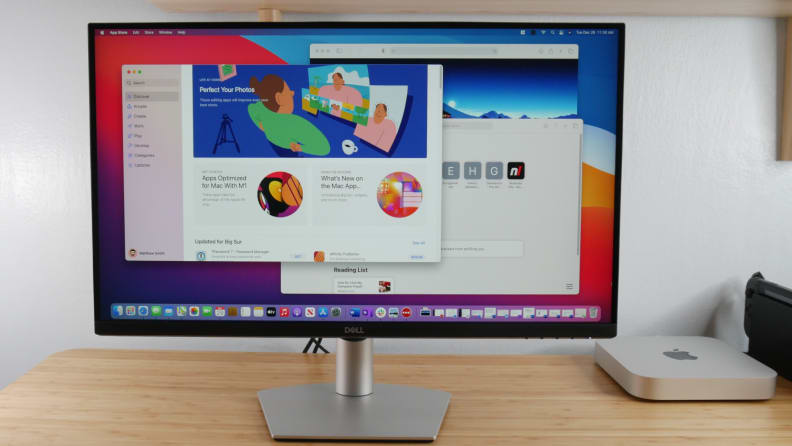Apple's M1 chip explained: Simple yet revolutionary
Switching to Apple Silicon makes the new Macs must-buys

 Credit:
Reviewed / TJ Donegan
Credit:
Reviewed / TJ Donegan
Products are chosen independently by our editors. Purchases made through our links may earn us a commission.
In November of 2020, Apple finally made an announcement that tech journalists and Mac superfans had predicted for years. The company ditched Intel and announced three new Macs—the Macbook Air and Pro, and Mac Mini—powered by a new proprietary chip, the M1. This is the most significant change to the Mac since it ditched PowerPC processors for Intel processors in 2006, and it’s arguably a greater leap than that.
More importantly, the M1 chip entirely changes the battle between Apple’s Mac and its Windows competition. Macs with the M1 chip have bolted ahead of even the best Windows alternatives to become the default choice. Here's why you may want to consider stepping up to the M1.
What is the M1 chip?

Explaining the difference between Apple’s M1 chip and the Intel processors can become a technical discussion about architectures and instruction sets, but there’s a simpler way to understand it: The M1 is a larger, faster version of the processor in the latest iPhone.
Apple’s first in-house chip design was the A4, which first appeared in the iPhone 4. It sent shockwaves through the industry by outperforming contemporary smartphone chips. Since then, Apple’s chips have maintained a steady lead over the competition from Qualcomm in most benchmarks, and the iPhone’s performance has become one of its key advantages. Even the affordable iPhone SE feels buttery-smooth in use.
The M1 has an 8-core CPU with what is called a big.LITTLE design, which means four of those cores are designed for performance and only used in demanding tasks, while the other four lean towards efficiency and are used for more mundane tasks. It also has a 7-core or 8-core GPU. There’s also a 16-core “Neural Engine” designed specifically for apps that use machine learning algorithms.
Despite its importance, the M1 chip itself isn’t a radical new design. The M1 is similar to the A12Z chip found in Apple’s latest iPad Pro, which also had 8 CPU cores and 8 GPU cores. If you’ve used an iPad Pro, you know it's a very fast tablet, so it’s no surprise the M1 also performs well.
The M1’s mobile origins lead to excellent efficiency. Our testing of the Apple MacBook Pro 13 with Apple M1 chip found it can outlast even the Dell XPS 13 2-in-1 in battery life, delivering almost 14 hours of endurance in our standard battery test. Efficiency also leads to quiet, cool operation, a big change from the howling fans that often plagued previous Mac laptops.
The real miracle is the software

Analysts and tech journalists were skeptical about the M1’s release, though not because of the hardware. The problem was the software, and how the software and hardware communicate.
Intel’s processors and Apple’s M1 use different instruction sets. Think of them as two people who speak different languages. Software intended to run on Intel’s chips aren’t coded to communicate with Apple’s silicon, and vice-versa.
In real life, two people speaking different languages would need to find a translator. Even then, they’d converse far slower than if they spoke the same language, and occasional misunderstandings are inevitable.
Similarly, previous software iterations need help communicating with the M1 chip, so Apple built a translator called Rosetta2. It’s brilliant. I’ve been covering technology professionally for 13 years (and an enthusiast since my family bought a PC in 1995), and I can’t recall any form of software emulation or translation that works as well at launch as Rosetta2. I can’t even recall one that comes close.
Benchmarks show that applications run through Rosetta2 maintain about 70 to 90 percent of the performance they would if running natively on Intel hardware. However, because Apple’s M1 chip is faster than the Intel hardware previously sold in most Macs, apps coded for Intel hardware sometimes run better on new M1-powered Macs than on their predecessors.
Rosetta2 is also surprisingly free of translation issues that could cause instability. We’ve encountered just two apps in our testing that won’t launch on the M1-powered Mac Mini: the Steam release of Among Us (though the iOS version works) and a lesser-known game called Superliminal.
iOS apps work, too
This brings us to support for iOS apps. MacOS is a separate operating system from iOS, but any Mac with Apple silicon can run apps designed for iOS. This again is completely seamless and reliable.
Granted, the experience isn’t always great, because apps designed for touch often feel a bit off when using a mouse. iPadOS also struggles with this now that it offers mouse support. It’s a minor issue, however, because it’s unlikely you’ll ever need to run an iOS app on the Mac. Also, most large developers offer native Mac apps or web apps designed for use with a mouse.
The result is a seamless experience. It’s so seamless, in fact, that you almost certainly won’t notice anything has changed. Apple doesn’t flag software that hasn’t been updated for the M1 chip, so there’s no way to know unless you go digging. Software running through Rosetta2 launches just like any other application. You can buy an M1-powered Mac with confidence that your existing software will work and, more importantly, you don't need any special knowledge to make it work.
Apple’s M1 chip makes the Mac a must-buy
The Mac, and the MacBook line in particular, was struggling to make the best of Intel’s hardware. Apple users have complained for years that Intel-powered Macs run too hot, are too loud, and suffer degraded performance in demanding workloads.
Apple’s M1 chip fixes all of those problems, and it does so at a surprisingly low price. Apple’s base Mac Mini, the most affordable way to buy into MacOS, starts at just $699, and it delivers performance that’s more in line with a Windows desktop priced above $1,000. In the laptop arena, the MacBook Pro 13 and MacBook Air with Apple M1 have no peer. While a few Windows laptops are faster, very few in the same size category can compete, and even class-leading alternatives like the Dell XPS 13 can't compete in battery life.
This is a revolutionary change that shifts the Mac into a position reminiscent of the iPhone: it’s the default choice. The iPhone isn’t the best phone for everyone, but when a friend asks me what to buy, it’s always my first recommendation. It’s fast, simple, reliable, has a great app ecosystem, and it’s even a good value. Apple’s M1 chip finally provides the Mac with all these traits.
Don’t hesitate to buy a Mac with the M1 chip. You’re going to love it.
